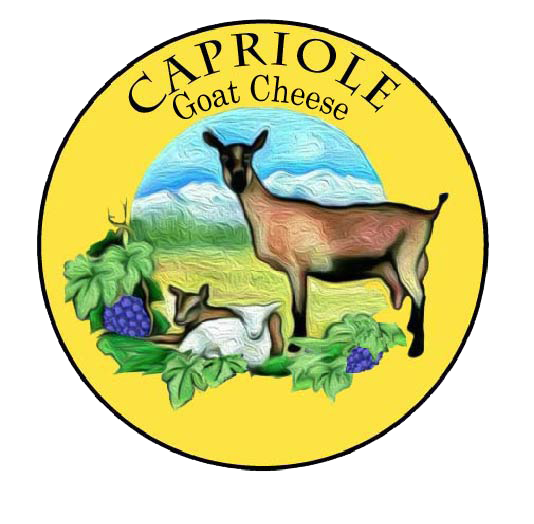Cheese and Charcuterie . . . keep it simple, but special, for the holidays!
Thankfully, American charcuterie is catching up to American artisan cheeses in quality and quantity. Meat has become the love child of every chef determined not to waste a single cut, from jowl to tail! It's sexy, delicious, and becoming very, very American.
Cheese and charcuterie are also a natural combination. The aging and ripening process for many dry cured meats resembles some aspects of cheese fermentation, and as a pair, they make a truly dynamic duo. In a balance of contrast--fatty meats against the acidity of most cheese, especially fresh and ripened goat cheeses—the Italians have it down. But charcuterie is a French term, and as such, usually refers to cooked meats like pates. In the U.S. it's rapidly becoming a catchall term for salted and dry cured meats in general. Keeping it general, and American, charcuterie includes:
· Dry cured, hard sausages like fiery sopressata or sweet, fennel flavored finocchiona
· Whole muscle cuts like prosciutto, capacolla, or well cured country hams (a Kentucky favorite) are made largely from pork, while bresaola is beef. I'm still waiting for Violina di Capra, or dry cured leg of goat, to become another U.S. adoptee.
· Terrines and Pates can be made from just about anything—from duck liver to rabbit, pork, or lamb, it may also include pieces of truffles, pistachios, pickled vegetables, peppercorns, herbs and spices.
Some general guide lines for cheese and charcuterie pairings.
1) Choose your cheeses first and make them the centerpiece of the show. It's easier to come up with the contrasts that make the pairings work. Capriole cheeses come in three basic categories—fresh, surface ripened, and aged. Each category can provide 1-3 cheeses for separate cheese/charcuterie plates.
2) Pair by looking for contrast in flavor and texture between cheeses and charcuterie. All Capriole cheeses have levels of acidity that will serve as a foil to fatty meats:
· Fresh goat cheese, creamy and light in texture, tart and tangy in flavor. Pair with thinly sliced dry cured sausages that are high in fat. Smoking Goose in Indianapolis makes some fantastic salumi--Fistful of Hops, Rust Belt Saucisson, Gin and Juice. Interesting on so many levels. Condiments might include a cherry, strawberry, or balsamic compote with a sweet but tart edge. Quince and Apple Tart Cherry & White Tea
· Ripened cheese like Sofia, Wabash, Flora, and Pipers Pyramide are also creamy, but denser, less tart, becoming stronger as they age. My current favorite pairing is with Red Hog Kentucky Ham in Louisville—paper thin, sweet and less salty than most country hams. Alas, only available in Kentucky. Prosciutto or coppa is also delicious, as is thinly sliced Colonel Bill Newsom’s country ham. Also love paper thin smoked salmon and tiny blinis. Condiments: Fresh figs, honey, dates and toasted, bourbon spiced pecans. Quince and Apple, Apples and Cranberry Preserves.
· Aged cheeses like Julianna, Old Kentucky Tomme, and Mont St. Francis are firmer in texture and wonderful with both spicy salumi like Smoking Goose Delaware Fireball as well as softer, country pates. The secret to great pates is freshness, so again, we choose Red Hog because they’re both immediately accessible and perfect. Look for pates that are local and freshly made. Cornichons of course, hot & spicy pickled okra, olive tapenade, fruit mostarda. Quince and Apple Tiny Figs and Black Tea Preserves.
3) Ask for samples of charcuterie when buying. Some would overpower any cheese.
4) Allow about 3-4 oz. of cheese and 2 oz. of paired charcuterie per person
5) Group each cheese/charcuterie pairing and their condiments on separate boards or serving platters. People will inevitably mix and match—not a problem.
6) Cut your cheeses when cold into bite-sized, pie shaped wedges and use a wire, or thin cleaned knife to cut your softer cheeses.
7) Allow to come to room temperature before serving—about 2 hours prior.
8) Serve with thinly sliced, crusty breads, just large enough for 1-2 bites. Can also brush with olive oil and toast in the oven (bruschetta). These can be done the day before and stored in airtight container.
9) And the wine? Pair to your cheese, like-to-like instead of by contrast. For fresh acidic cheeses and young ripened ones try crisp whites like Sauvignon blanc, Pinot Gris or Grigio, dry Champage or Prosecco, Albarino. For older ripened cheeses and pates, a Pinot Noir or white burgundy. For the aged cheeses paired with pates Pinot Noir, or beer if serving with pickled vegetables. Check out our pairings for each of our cheeses.
These pairings can go from just one before or after a meal, or several to replace a meal (my preference). The point is, you’re not cooking, can prepare ahead of time, and enjoy yourself. This, after all, is what the holidays are all about.
Good food, good friends and a toast to the season . . .“May our house always be too small to hold all our friends.”

